- Poisoning by blister beetles is rare
- All hay can potentially contain blister beetles, but alfalfa hay has a greater risk
- Alfalfa blossoms can serve as a food source for adult blister beetles
- Blister beetles contain cantharidin, a burning agent or poison
- If equine and/or livestock animals display signs of toxicity, stop feeding your current hay source and contact your veterinarian immediately for diagnosis and treatment options
- Onset of toxicity symptoms can take a few hours to days
- Contact UW’s Insect Diagnostic Lab for insect analysis
What are Blister Beetles?
Blister beetles, known as meloids to entomologists, are insects that naturally contain a toxin, known as cantharidin. Stored within their bodies it can cause blistering of human skin, or the intestinal tracts of animals that ingest blister beetles1,2,3. Poisoning caused by blister beetles is rare, but being aware of these insects and their potential impacts is worthwhile for owners of horses or other livestock.
Cantharidin, a burning agent or poison, is produced within the reproductive systems of male blister beetles and production is stimulated due to copulation2,4. During this time, males transfer the cantharidin they produced to the female blister beetle2,4. Due to this production and transfer, there is variation of cantharidin concentrations across sexes of blister beetles with female blister beetles containing lower concentrations of cantharidin compared to their male counterparts2. There is also a variation in cantharidin concentrations across species of blister beetles3.
Blister beetles’ range in size from 3-70 mm5. Blister beetles have a cylindrical shape, distinctive cranial neck, and have many different color variations depending on species5,6. PJ Liesch, University of Wisconsin – Madison (UW) Entomologist and Director of UW’s Insect Diagnostic Lab, also notes that blister beetles are not particularly hard or crunchy as they have a somewhat softer exoskeleton, similar to fireflies.
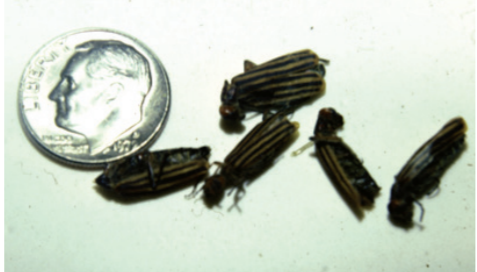
Nearly 30 species of blister beetles have been documented in Wisconsin with most of these species feeding off ground nesting bee larvae6. While twenty-eight species of blister beetles may seem high, there are nearly 400 species of blister beetles documented within the United States, according to Liesch. Each species varies in terms of where and when adult blister beetles are active around the United States3. According Liesch, Epicauta, Lytta, and Meloe are some of the most common genera of blister beetles found in the Midwest and around the country.
Where are Blister Beetles Found?
Blister beetle larvae live in the ground and feed off both nesting bee larvae and grasshopper eggs2,3,8. Adult blister beetles can feed on alfalfa blossoms and many other plants3. While it is possible for blister beetles to be present within grass hay, it is much more common for blister beetles to be found in alfalfa hay as alfalfa blossoms can serve as a food source for the adult blister beetles. Blister beetles have also been found on tomatoes, potatoes, beets, lima beans, and other garden vegetables within the United States9. Additionally, blister beetles have been observed throughout Wisconsin on black-eyed Susan, native sunflowers, rosinweed, and prairie coreopsis, and other plants6.
Examples of blister beetles found within Wisconsin
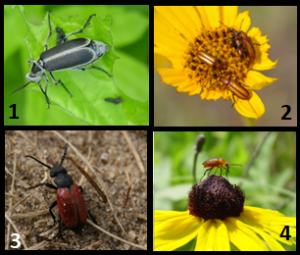
Photo 1 – Epicauta cinerea (6),
Photo 2 – Gnathium minimum (6),
Photo 3 – Tricrania sanguinipennis (6),
Photo 4 – Zonitis vittigera (6).
Blister beetles are found in every state across the United States and in parts of Canada, Mexico, and Central America6,10. Additionally, blister beetles are typically found in clusters or aggregations causing variable incorporation of blister beetles into hay2.
Blister Beetles and Equine
Blister beetle toxicity in equine has been documented since the 1960s11. Since concentrations of cantharidin range across species and sexes of blister beetles, it is challenging to determine how many blister beetles equine need to ingest before experiencing toxicity2. The minimum lethal dose of cantharidin is estimated to be ≤ 1 mg/kg2.
Table 1. Estimated number of blisters beetles consumed for a lethal (1 mg/kg) dose of cantharidin in equine2.
| Cantharidin content of a blister beetle (mg) | Equine Weight (lb) | |
| 550 | 1000 | |
| 1 | 250 | 455 |
| 2 | 125 | 244 |
| 3 | 83 | 161 |
| 4 | 63 | 122 |
| 5 | 50 | 97 |
Possible signs of toxicity within equine include:
- Acting like they are colicky, in shock, have depression (depressed equine tend to have lowered heads)3,11
- Frequently drinking small amount of water or keeping their muzzle submerged in water (this helps soothe lesions or blisters on the lips and within the mouth)3,12
- Frequently attempting to void urine12,13,14
- Profusely sweating or showing symptoms of gastric ulcerations or abdominal pain3
- Experiencing loss of appetite, weight loss, diarrhea, increased heart rate or body temperature, and laminitis12

The onset of symptoms can range from hours to days3,11,12. If you notice signs of blister beetle toxicity, contact your local veterinarian immediately.
Tips for Hay Producers
Scout for blister beetles in alfalfa fields during second, third, and consecutive growths as well as new seedings16. Scouting is not needed during the spring growth as the alfalfa has not yet blossomed16.
Cut alfalfa before blossoms begin, to deter blister beetle attraction. As mentioned before, adult blister beetles can be attracted to alfalfa blossoms as a food source. Cutting alfalfa before flowering will decrease the amount of food available to blister beetles and will deter them from that specific area.
Avoid crimping as hay crimping and/or conditioning crushes blister beetles2. While this kills the blister beetles, their carcasses are then incorporated into the bales2. If hay is not conditioned or crimped, beetles are able to disperse before baling occurs2,17. It is important to note that cantharidin can still be found within the carcass of the blister beetle for months after the beetle dies17.
Scout your field frequently for blister beetles if you are growing alfalfa near rangeland. Rangeland supports grasshoppers, in turn supporting blister beetle larvae2.
If you see blister beetles within your fields, contact your local agronomist to discuss the appropriate insecticide. It is important to note that not all states have the same guidelines for insecticide application. Additionally, it is important to note that spraying an insecticide directly onto alfalfa fields could cause the blister beetle to die within the field and become incorporated into hay bales. You may want to consider cultural responses, such as controlling primary weeds in and near alfalfa fields and directly controlling for grasshopper populations, as an alternative to chemical responses.
Tips for Hay Buyers
Grow your own hay or purchase hay from producers you trust. However, this is not always an option. If you need to purchase hay for your equine, or other animals, purchase first-crop hay when possible. Incorporation of blister beetles will likely be lower in first-crop hay compared to consecutive crops as there is less likely to be alfalfa blossoms to attract adult blister beetles to the first crop hay.
When purchasing hay from producers you do not know, consider testing your hay for presence of blister beetles. Contact your local extension educator, veterinarian, or Liesch at UW’s Insect Diagnostic Lab to test hay for blister beetles.
Routinely examine flakes of hay before feeding.
What to do if Equine Toxicity is Suspected
If equine display signs of cantharidin ingestion, immediately stop feeding your current source of hay and contact your local veterinarian.
Before feeding the same hay source, collect a hay sample for further insect analysis. To collect an insect sample from hay sources, lay a white or light-colored sheet or tarp on the ground. Shake hay flakes or samples over the sheet or tarp, catching the dislodged insects onto the tarp or sheet. Next, collect all insects (whole and crushed insects) and place in a hard-sided container. Take caution while collecting samples by avoiding contact with skin and mucous membranes.
Once you have a sample of insects, contact your local Extension educator or entomologist.
If you are not feeding square bales, consider taking many cores throughout the round bale and shaking those out over a light-colored tarp or sheet.
What to do with Infested Hay
If the blister beetles within your infested hay have moderate or low levels of cantharidin, you could consider feeding the hay to healthy equine and/or other animals2. While this may seem alarming, moderate levels of blister beetles that contain low levels of toxic cantharidin may not induce toxicity symptoms. Prior to feeding infested hay, regardless of cantharidin level, contact your local veterinarian to discuss potential feeding options and/or concerns.
If you choose to feed infested hay, watch your animals for signs of toxicity. If toxicity symptoms are observed, contact your local veterinarian immediately. If you do not want to feed any infested hay, consider burning or burying it. This will prevent exposure of cantharidin to other animals.
Just Equine?
Blister beetles have caused documented human health cases ranging from skin blisters, fever, shock, and abdominal pain to myocardial necrosis12,18,19. Myocardial necrosis is death of heart tissues, which can be observed after a heart attack. It is not uncommon for hay producers to squish a blister beetle that crawled under their clothing, producing a blister on their skin. The lethal dose of cantharidin for humans is estimated to be <1 mg/kg2.
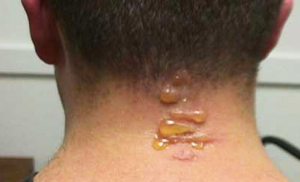
Humans and equine are not the only animals negatively influenced by cantharidin. The lethal dose of cantharidin is estimated to be 1.0 – 1.5 mg/kg for feline and canine and 20 mg/kg for rabbits3,21. Sheep, goats, poultry, cattle, and rats have also exhibited cantharidin toxicity from ingestion of blister beetles within alfalfa hay3,23,24.
When compared to other animals, equine tend to have a greater response or reaction to blister beetles. The reason for this is unknown.
For More Information
Contact your local Extension Educator; local veterinarian; forage testing facilities; or Liesch with UW’s Insect Diagnostic Lab at pliesch@wisc.edu or (608) 262 – 6510. Additionally, Dr. Darlene Konkle, Wisconsin State Veterinarian, can be contacted at darlene.konkle@wisconsin.gov or (608) 224 – 4884 and Dr. Keith Poulsen, Director of Wisconsin Veterinary Diagnostic Laboratory, can be contacted at keith.poulsen@wvdl.wisc.edu or (608) 262 – 5422.
References
1Karras, D. J., S. E. Farrell, R. A. Harrigan, F. M. Henretig and L. Gealt. 1996. Poisoning from “Spanish fly” (cantharidin). The American Journal of Emergency Medicine 14: 478-483.
2Capinera, J. L., D. R. Gardner and F. R. Stermitz. 1985. Cantharidin levels in blister beetles (Coleoptera: Meloidae) associated with alfalfa in Colorado. Journal of Economic Entomology 78: 1052-1055.
3D. G. Schmitz. 1989. Cantharidin Toxicosis in Horses. Journal of Veterinary Internal Medicine. 3: 208 – 215.
4Sierra, J. R., W.-D. Woggon and H. Schmid. 1976. Transfer of cantharidin during copulation from the adult male to the female Lytta vesicatoria (‘Spanish flies’). Experientia 32: 142-144.
5J. D. Pinto. 1991. The taxonomy of North American Epicauta (Coleoptera: Meloidae), with revision of the nominate subgenus and a survey of courtship behavior. University of California Publication Entomology Bulletin 110, 372 p.
6Daniel A. Marschalek. 2013. Blister beetles (Coleoptera: Meloidae) of Wisconsin: Distribution and ecology. Dissertation. University of Wisconsin – Madison, Entomology.
7C. Sommardahl. 2015. Blister Beetles: Alfalfa Hay Contamination. UTCVM Large Animal Clinical Sciences.
8Szczepaniec, A., and C. M. Rush. 2019. Unusual flare-up of Black Blister Beetles in the Panhandle of Texas. American Entomologist. 65(4): 232 – 235.
9United States Department of Agriculture: Plant Pest Control Division. 1960. Cooperative Economic Insect Report. 10 (1). Print.
10Samlaska, C. P., G. A. Samuelson, M E. Faran, and N. I. Shparago. 1992. Blister beetle dermatosis in Hawaii caused by Thelyphassa apicata (Fairmaire). Pediatric Dermatology. 9 (3): 246 – 250.
11A. J. Bahme. 1968. Cantharides toxicosis in the equine. Southwestern Veterinarian. 21: 147-148.
12Schoeb, T. R. and R. J. Panciera 1979. Pathology of blister beetle (Epicauta) poisoning in horses. Veterinary Pathology 16: 18-31.
13R. J. Panciera. 1982. Cantharidin (blister beetle) poisoning. In Mansmann R.A., McAllister E.S., eds. Equine Medicine and Surgery. Santa Barbara, CA: American Veterinary Publications. 203-204.
14J. B. Rollins. 1985. Blister beetle poisoning in horses. Equine Pract. 7:6 – 8.
15A. Trimble. What is lurking in the alfalfa hay? Blister beetle poisoning in horses. Kansas State University. Web. Accessed on: 1/15/2020. Access link: https://www.vet.k-state.edu/vhc/services/equine/timely-topics/blisterbeetleFeb16.html.
16Ryan Dewerff, Bryan Jensen, Patrick J. Liesch, Glenn Nice, Mark Renz, Damon Smith, and Rodrigo Werle. 2020. Pest Management in Wisconsin Field Crops: A guide to managing weeds, insects, and diseases in corn, soybean, forages, and small grains. UW-Madison, Division of Extension.
17Madeline McCurry-Schmidt. 2012. How to protect horses from toxic blister beetles. American Society of Animal Science. https://www.asas.org/taking-stock/blog-post/taking-stock/2012/08/10/how-to-protect-horses-from-toxic-blister-beetles.
18Schoeb, T. R. and R. J. Panciera 1978. Blister beetle poisoning in horses. Journal of the American Veterinary Medical Association 173: 75-77.
19Craven, J. D., & Polak, A. (1954). Cantharidin Poisoning. British medical journal, 2(4901), 1386–1388. doi:10.1136/bmj.2.4901.1386
20Selander, R.B. and T.R. Fasulo. 2017. Blister Beetles. University of Florida. Web. Accessed on 1/16/2020. Access Link: http://entnemdept.ufl.edu/creatures/urban/medical/blister_beetles.htm.
21T. Sollman. 1943. A manual of pharmacology. Philadelphia: WB Saunders. 154-155.
22Ray, A. C., L. O. Post, J. M. Hurst, W. C. Edwards, and J. C. Reagor. 1980. Evaluation of an analytical method for the diagnosis of cantharidin toxicosis due to ingestion of blister beetles (Epicauta lemniscata) by horses and sheep. Am J Vet Res. 41: 932 – 933.
23Ray, A.C., S. H. Tamulinas, and J. C. Reagor. 1979. High pressure liquid chromatographic determination of cantharidin, using a derivatization method in specimens from animals acutely poisoned by ingestion of blister beetles, Epicauta lemniscata. Am J Vet Res. 40 (4): 498 – 504.
24K. Ghoneim. 2013. Cantharidin toxicosis to animal and human in the world: A review. Standard Research Journal of Toxicology and Environmental Health Services. 1(1):1-16.
Reviewers:
PJ Liesch – Entomology Specialist
Dr. Darlene Konkle – Wisconsin State Veterinarian
Dr. Keith Poulsen – Director of WI Vet Diagnostic Lab
Ryan Sterry – St. Croix County Livestock Educator
Amanda Young – Dodge County Dairy Educator
Download Article

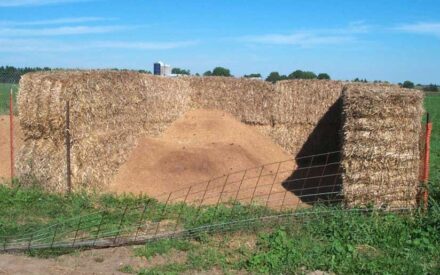 Composting Mortalities
Composting Mortalities Easy in, easy out: Incorporate biosecurity upon the introduction of new animals
Easy in, easy out: Incorporate biosecurity upon the introduction of new animals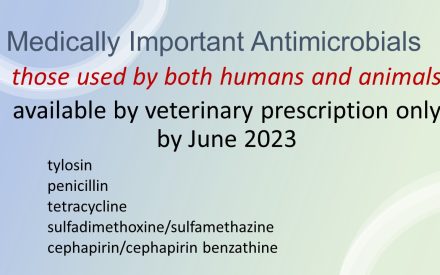 Are you ready? Antibiotics for livestock will be prescription only in 2023
Are you ready? Antibiotics for livestock will be prescription only in 2023 New techniques to monitor regression of osteochondrosis lesions - 2021 Badger Swine Symposium
New techniques to monitor regression of osteochondrosis lesions - 2021 Badger Swine Symposium


